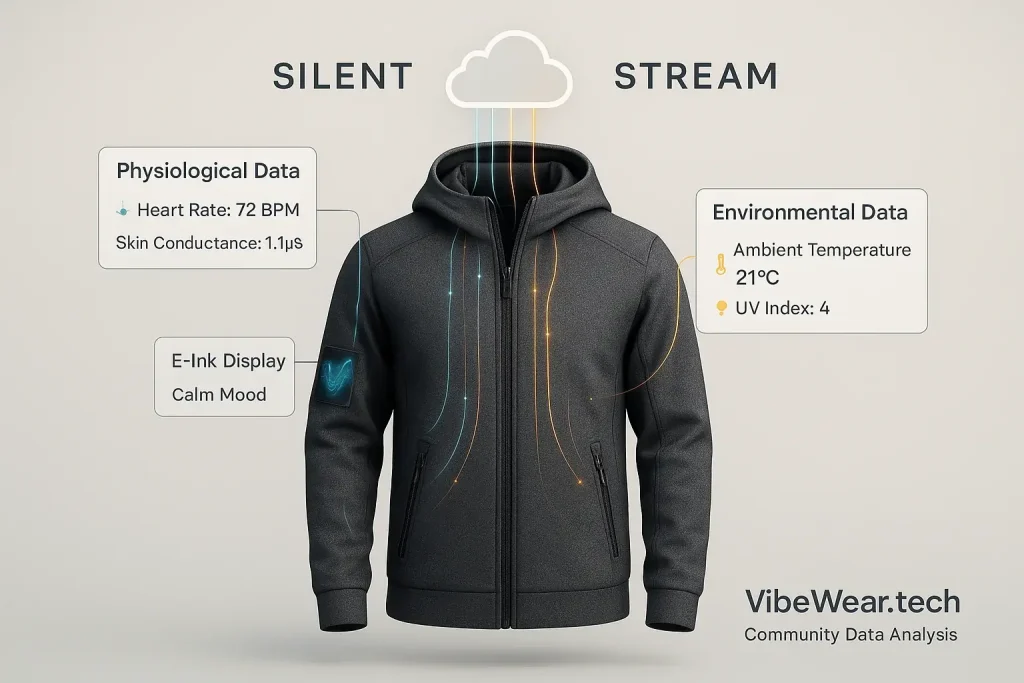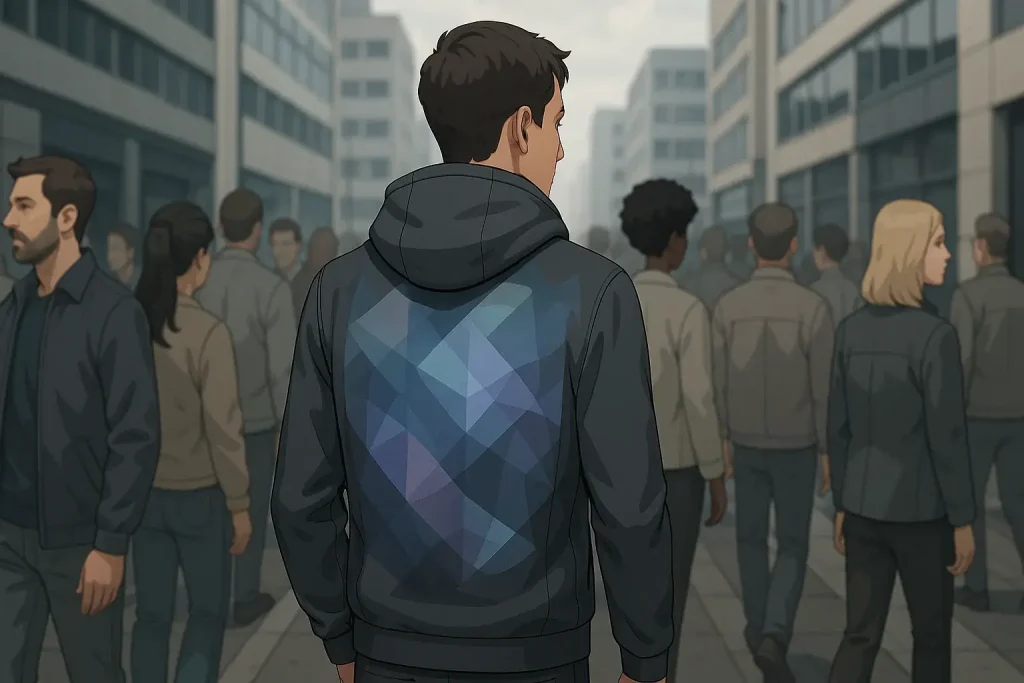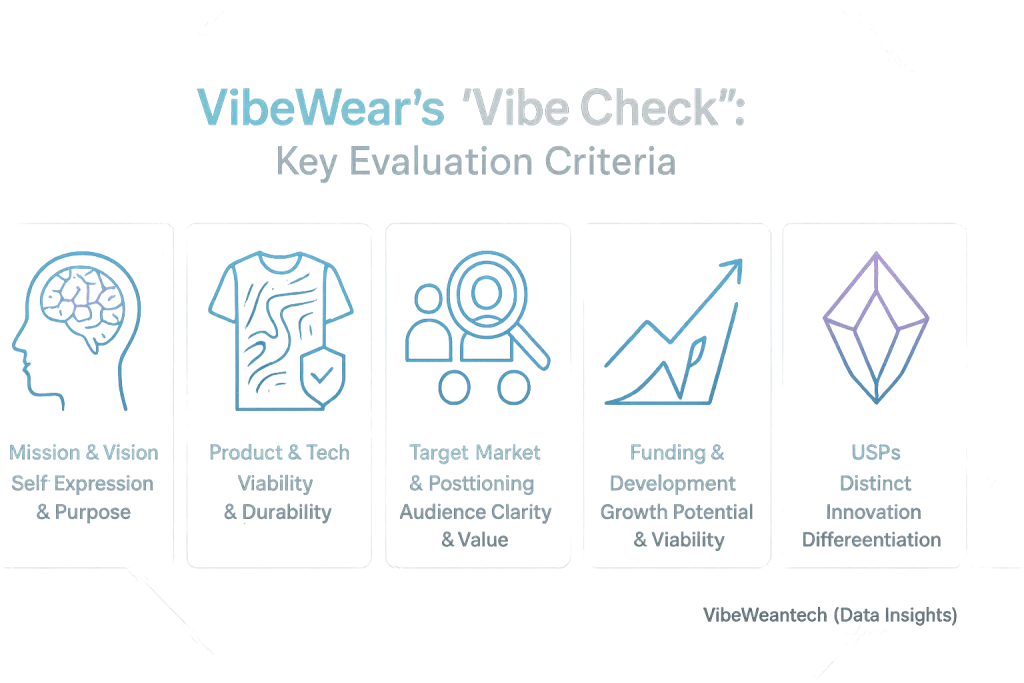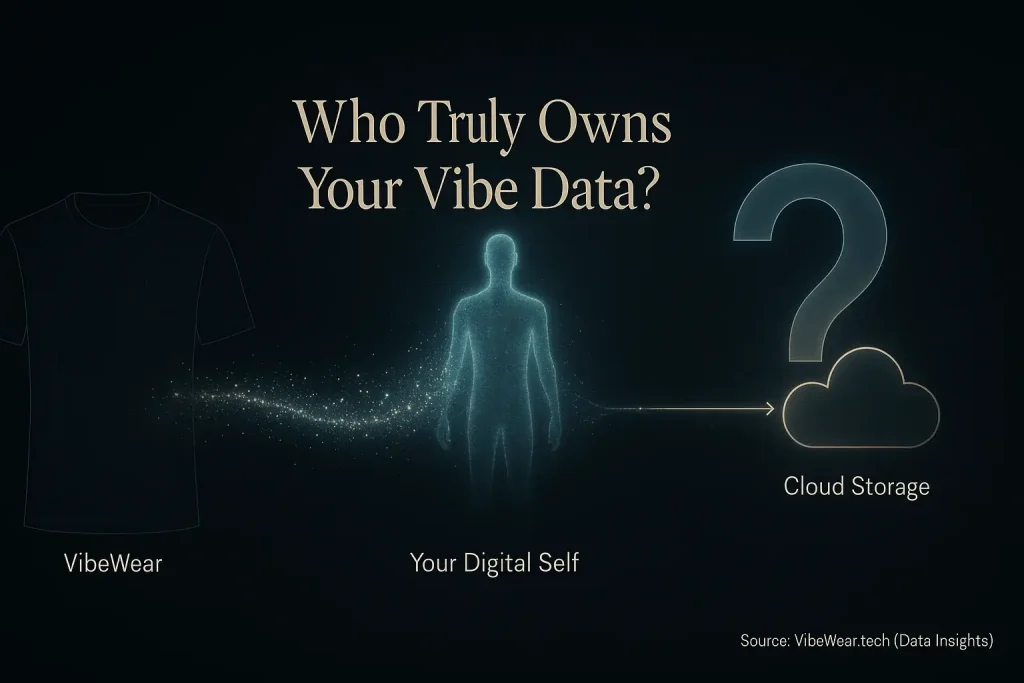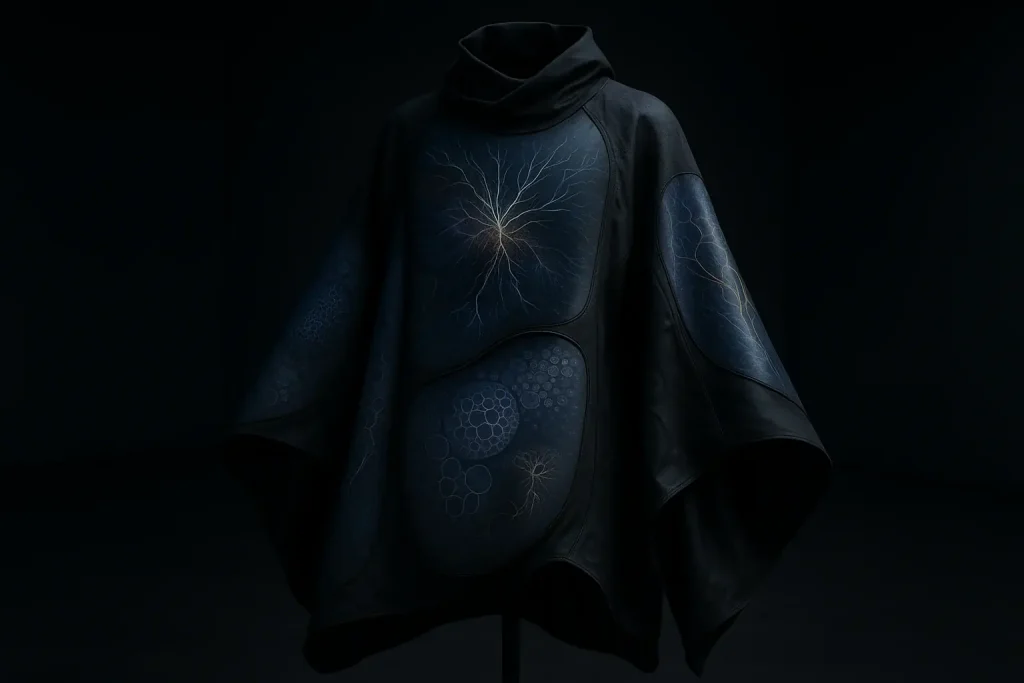Beyond the Hype: Unpacking Real User Frustrations with Early E-Ink Apparel
Have you seen those flawless tech visuals? Marketing renders present E-Ink apparel as perfect. The future looks sleek. But initial concepts often hit practical snags. Early adopter experiences reveal these unspoken truths.
This page dives deeper. VibeWear analyzes common user frustrations with early E-Ink apparel. We uncover what early adopters and DIY makers truly experience. These are not just theories. These are real-world problems.
Understanding these issues is crucial. It helps set realistic expectations for mood-adaptive fashion. This knowledge fuels future development. VibeWear believes this honesty drives genuine innovation.
The Wear & Tear Reality: Why Early E-Ink Apparel Fails the Durability Test
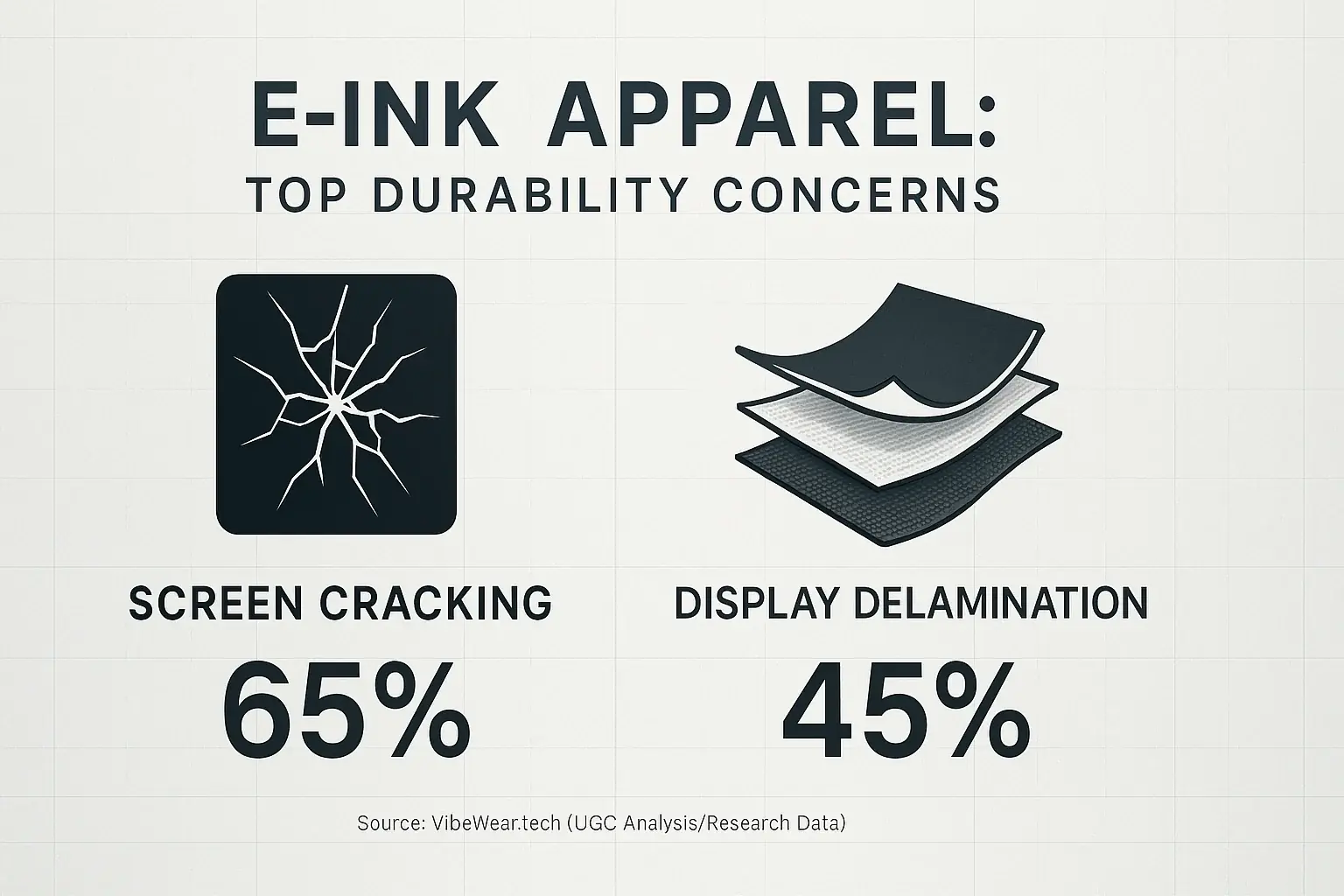
E-Ink displays offer visual magic. Their integration into clothing, however, presents serious durability questions. Users often report e-ink apparel fails the daily wear test. This fragility contrasts sharply with fashion's expected resilience, creating user frustration.
Imagine your new E-Ink jacket. You lean against a textured wall. Or accidentally fold it too sharply. Then, a spiderweb crack appears on the display. That is the nightmare many early adopters unfortunately face. Sharp folds or sudden impacts frequently cause screen cracking.
Repeated bending can cause display panel delamination. Washing cycles? A huge risk. Water resistance remains a significant challenge for e-ink garments, often leading to display malfunction after moisture exposure. Users express disappointment when expensive techwear becomes unusable after minimal real-world stress. This reliability gap fundamentally undermines the product's perceived value.
These are not merely theoretical problems. They represent real-world frustrations for current e-ink apparel users. VibeWear's analysis of early adopter feedback highlights this durability gap as a primary concern. Robust flexible substrates and advanced protective layers are absolutely crucial for future development. True resilience is non-negotiable.
Powering Your Vibe: The Unseen Battle with Battery Life & Charging
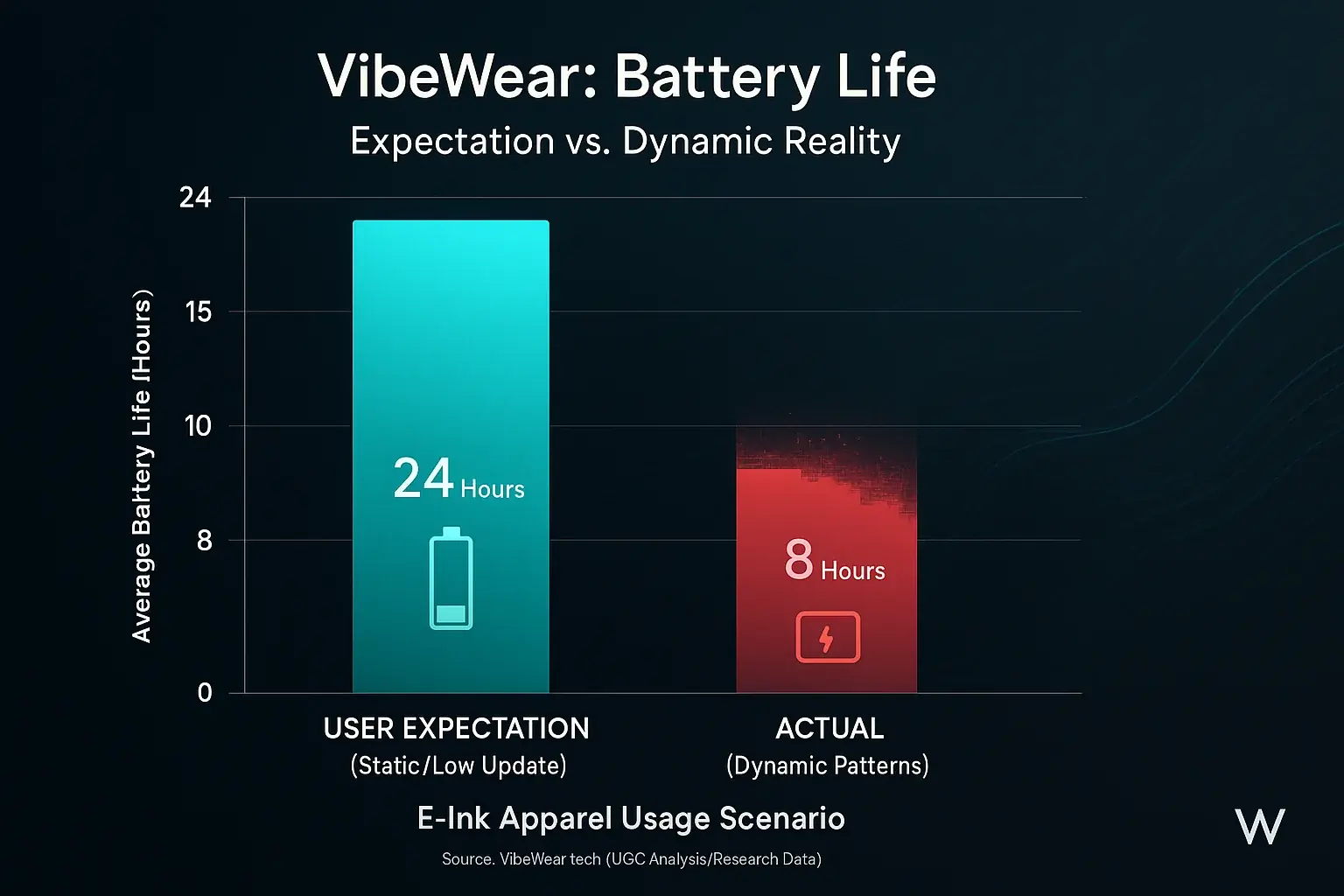
E-Ink technology holds a promise of low power use. This is true. For static displays. Dynamic patterns, however, change everything. Your VibeWear constantly updates its expressive designs. These frequent display changes consume significantly more energy. Many early adopters unfortunately discover this reality quite fast, leading to understandable frustration with E-Ink apparel battery life.
Imagine this scenario. You arrive at a party, your garment displaying a mesmerizing, shifting pattern. It captivates. Then, halfway through the vibrant evening, your design freezes. Dead battery. The vibe dies instantly. Owners often grumble about this unexpected power drain on their E-Ink apparel battery life. This sudden interruption disrupts an otherwise seamless experience with adaptive fashion.
Current E-Ink apparel prototypes often demand frequent charging. This necessity introduces inconvenience. Users report needing proprietary charging wires. Sometimes they must remove power sources entirely for replenishment. It is a hassle. The battery packs themselves often add noticeable bulk and weight. They can feel awkward against the body. This compromises garment comfort and also impacts the sleek, integrated aesthetic that users deeply desire from their innovative streetwear.
Users clearly want better power solutions for their VibeWear. They desire seamless, long-lasting energy. Power sources must sustain dynamic displays without constant worry. Imagine batteries that integrate invisibly into the fabric. No more interruptions to your self-expression. VibeWear research actively explores promising avenues like wireless charging technologies and flexible, lightweight power cells. Energy harvesting from body movement presents another exciting path toward truly autonomous, adaptive clothing.
More Than Just a Screen: Usability & Wearability Woes of Smart Apparel
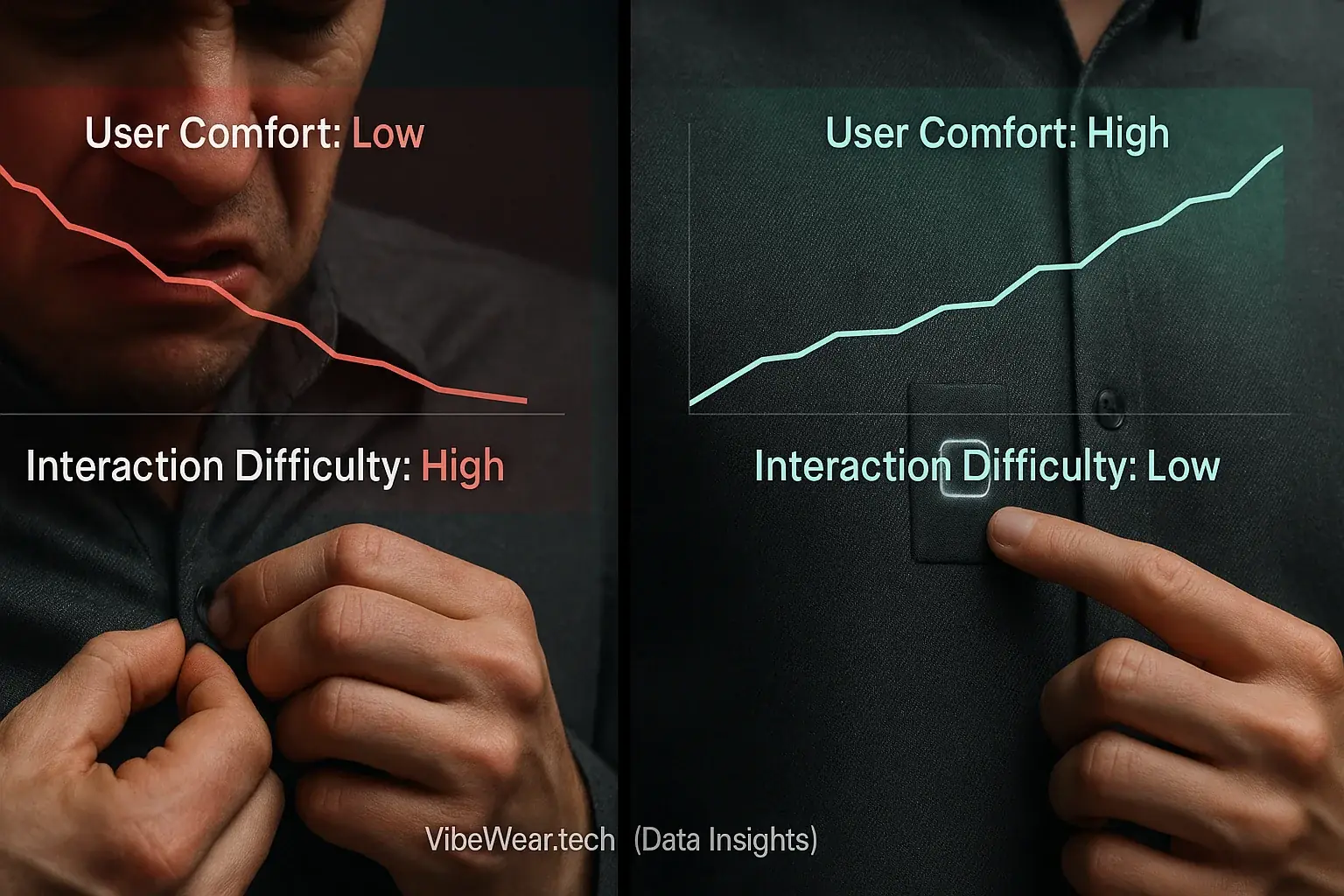
E-Ink apparel control often presents real challenges. Users face clunky interfaces. Imagine: you want to change your shirt's pattern. You fumble with a tiny seam button, or the app crashes. This common frustration means the tech feels awkward, not intuitive. Effortless interaction should be the goal.
Physical comfort is also paramount for smart apparel. Rigid E-Ink panels can make clothing stiff. Bulky wiring often creates awkwardness. Users frequently report heat from integrated electronics. This impacts garment breathability significantly. True wearability demands solutions for these physical hurdles, ensuring garments feel good.
The dream remains smart clothing as a 'second skin'. Current hardware integration often challenges this ideal. Stiff components and visible tech disrupt any seamless feel. Users expect fashion that enhances their life, not a gadget merely strapped on. VibeWear's analysis highlights that wearability blends control, comfort, and aesthetics; it is more than flexible screens.
The Price Tag Puzzle: Is Early VibeWear Worth the Investment?
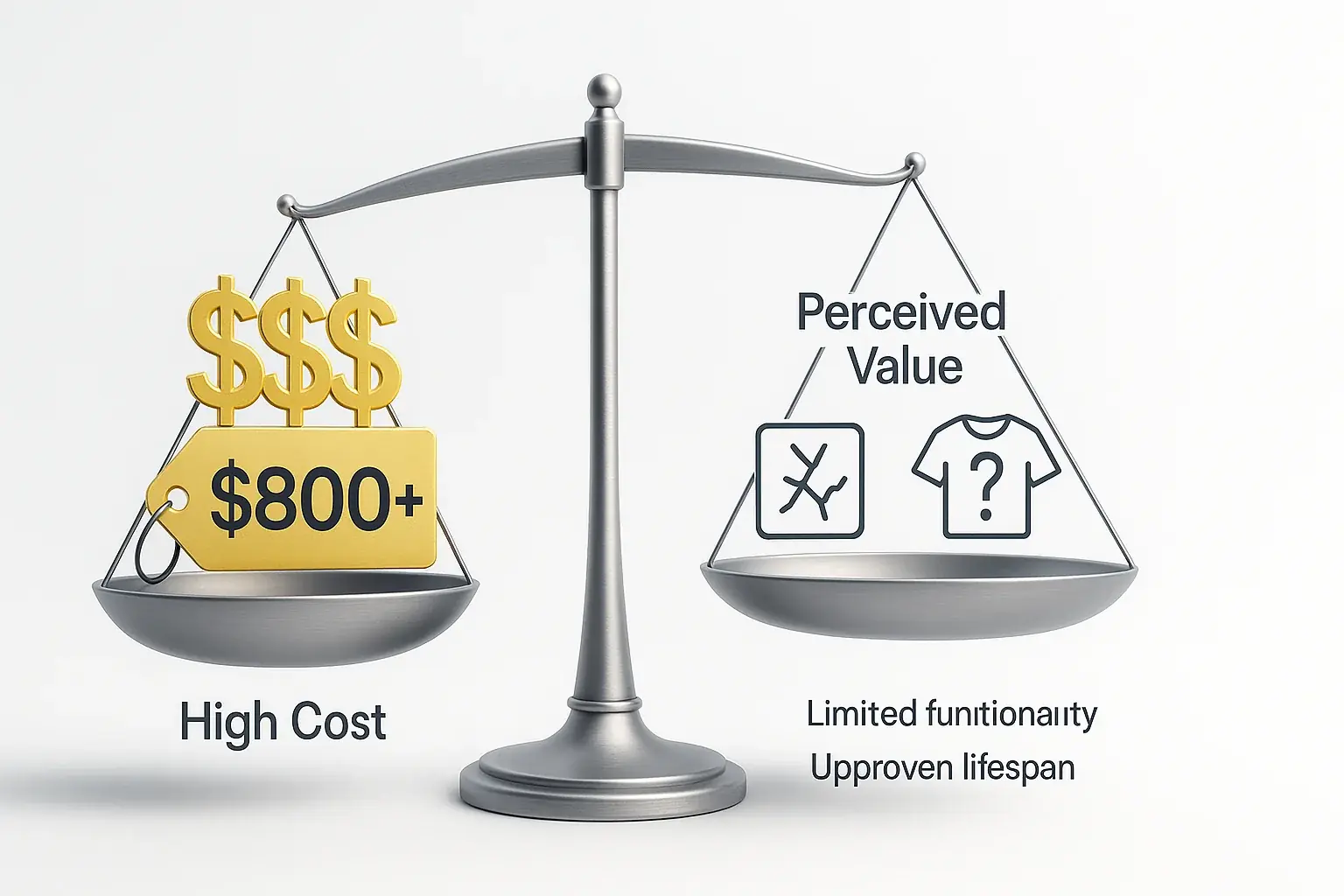
E-Ink panels themselves carry a high price. Advanced bio-sensors further inflate costs. Specialized manufacturing processes for adaptive apparel add another layer of expense. Early VibeWear garments, therefore, arrive with substantial price tags. This reality shapes initial consumer perceptions.
Imagine this scenario. You spot a prototype E-Ink jacket. It costs $800. The idea of shifting designs captivates you. Then, practical thoughts intrude. Can I even wash this? Will the delicate tech break? What if something better emerges in twelve months? VibeWear's analysis of early adopter feedback reveals users frequently grapple with these questions. They struggle to justify such a premium for technology so new, potentially fragile, and with an unproven lifespan. The investment feels uncertain.
The initial thrill of dynamic self-expression is undeniable. That novelty, however, can diminish quickly. A garment proving impractical for daily life tests patience. Frequent malfunctions or care difficulties transform excitement into frustration. If these practical problems persist, the high cost feels entirely unwarranted. The 'wow' factor fades. The garment becomes a very expensive experiment.
For VibeWear technology to reach true mass adoption, a shift is essential. Production costs must decrease substantially. Or, the tangible, everyday value offered must increase dramatically. Consumers need more than just fleeting novelty to make a significant financial commitment. The fundamental question remains: is the current iteration truly worth the investment for most people? VibeWear acknowledges this critical financial hurdle. Addressing it head-on is key to the future.
Your Vibe, Your Voice: Help Us Map Future VibeWear Improvements
What's Your Biggest VibeWear Concern?
Select a potential challenge with mood-adaptive E-Ink apparel to see what insights we've gathered and how it might be addressed.
Your vision fuels VibeWear. Spot a challenge? Report it. Your insights directly shape the future of adaptive fashion, highlighting real-world needs for E-Ink apparel.
VibeWear User Feedback powers our progress. Understanding these reported problems is absolutely essential. It is the first step toward genuine innovation and future VibeWear breakthroughs, built from shared community insights.
Beyond the Glitch: What Early Adopters and DIY Visionaries Wish For
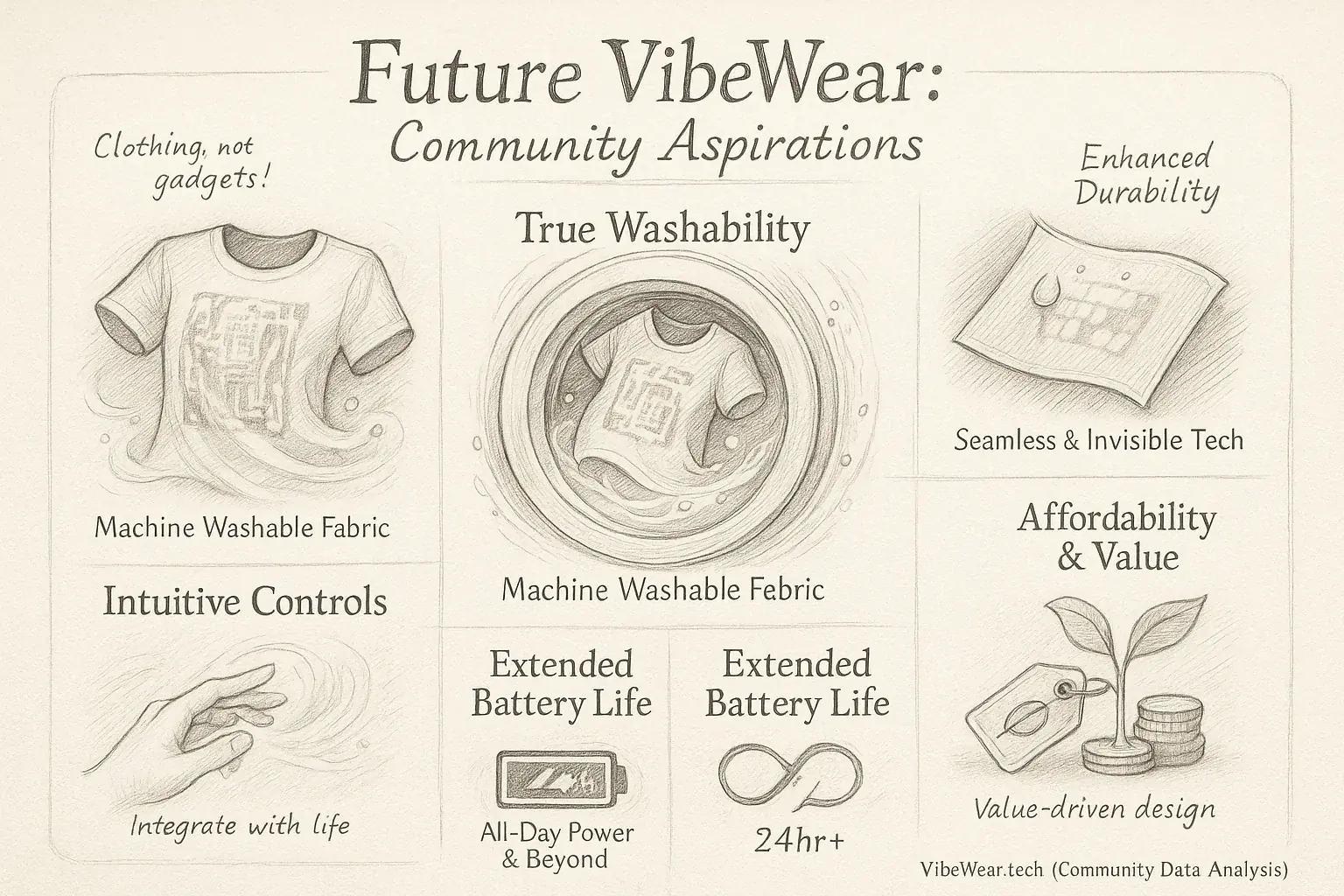
Every challenge? A launchpad. Imagine wrestling a stiff, un-washable prototype. What's the first dream? A truly flexible, machine-washable display. That practical wish fuels real innovation. VibeWear research shows these early frustrations become vital blueprints for adaptive fashion. User aspirations directly guide future VibeWear improvements.
Early adopters and DIY makers share a clear vision. They aspire to E-Ink apparel that merges seamlessly with life. True washability is a paramount desire. Invisible tech integration follows closely. Durability, too, must transform. These are not mere hopes. They are core requirements for widespread adoption. The community wishlist demands clothing, not delicate gadgets.
The collective longing extends beyond physical traits. Users envision significantly more intuitive controls. Power solutions need to last, truly last. Affordability is another major innovation driver. People seek genuine value. They want mood-adaptive streetwear that enhances life without adding complexity or breaking the bank. What does that future feel like?
This VibeWear community wishlist acts as a potent guide. These shared aspirations fuel our design and engineering efforts. Early adopter feedback directly shapes the next generation of smart clothing. The path to better, more integrated, and accessible E-Ink fashion becomes clearer with every piece of insight. Future VibeWear improvements depend on this dialogue.
Shaping the Future: Why Your Feedback on VibeWear Matters
Real user problems shape VibeWear's path. VibeWear.tech commits to open dialogue for this evolution. Together, we build a future where adaptive fashion is deeply responsive and reliable.

